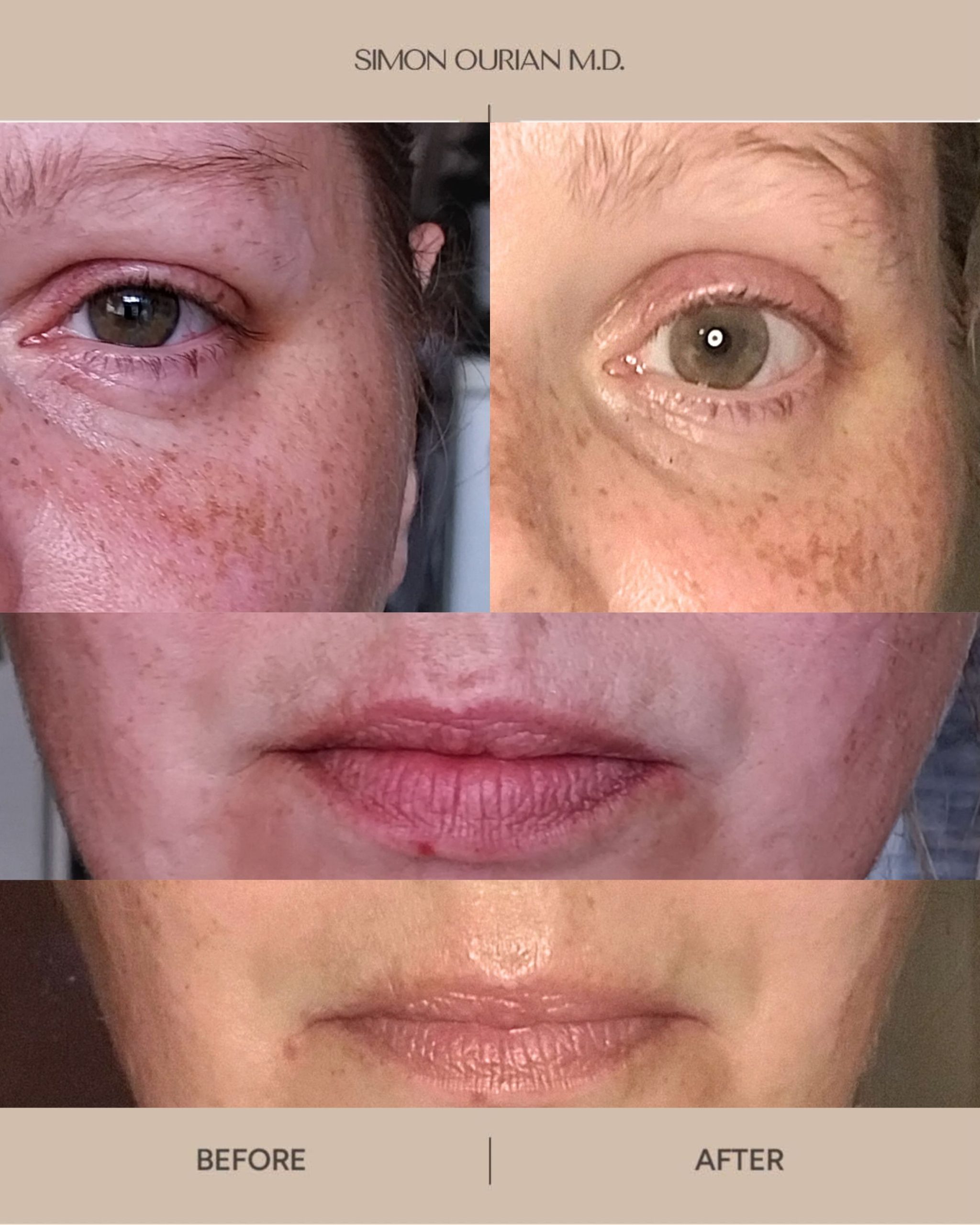Geen producten in de winkelwagen.
Hyperpigmentation: A Closer Look
Hyperpigmentation is a skin condition characterized by patches of darker skin than the surrounding areas. It occurs when excess melanin, a pigment that gives skin its color, accumulates in certain areas. While it can be a cosmetic concern, it’s important to note that hyperpigmentation is generally harmless and doesn’t pose any health risks.
Types of Hyperpigmentation
There are several types of hyperpigmentation, each with its own unique causes and characteristics:
- Melasma: This type of hyperpigmentation is characterized by brown or gray patches on the face, often appearing as a mask or butterfly shape. It is more common in women, especially during pregnancy or while taking certain medications.
- Post-inflammatory hyperpigmentation (PIH): This occurs after a skin injury, such as acne, a burn, or an infection. The skin’s response to the injury can lead to increased melanin production.
- Age spots (solar lentigines): These are flat, brown spots that develop on sun-exposed areas of the skin, typically in older individuals. They are caused by sun damage.
- Freckles: These are small, flat, brown spots that are often present from birth or develop during childhood. They are also caused by sun damage.
Causes of Hyperpigmentation
The exact causes of hyperpigmentation can vary, but several factors contribute to its development:
- Sun exposure: Excessive sun exposure is a common cause of hyperpigmentation, as UV rays can stimulate melanin production.
- Hormonal changes: Hormonal fluctuations, such as those that occur during pregnancy or menopause, can trigger hyperpigmentation.
- Skin injury: Acne, burns, or other skin injuries can lead to post-inflammatory hyperpigmentation.
- Medications: Certain medications, including birth control pills, antibiotics, and anti-seizure drugs, can cause hyperpigmentation as a side effect.
- Genetic factors: Some people may be genetically predisposed to hyperpigmentation.
Treatment Options for Hyperpigmentation
While hyperpigmentation can be challenging to treat, several options are available to help improve the appearance of dark patches:
- Topical treatments: Over-the-counter or prescription creams and lotions containing hydroquinone, kojic acid, or azelaic acid can help lighten the affected areas.
- Chemical peels: Chemical peels can exfoliate the skin and help to reduce hyperpigmentation.
- Laser therapy: Laser treatments can target and break down excess melanin, leading to lighter skin.
- Microdermabrasion: This non-invasive procedure can help to exfoliate the skin and reduce the appearance of dark patches.
Prevention Tips
Preventing hyperpigmentation is often easier than treating it. Here are some tips to help protect your skin:
- Sun protection: Always wear sunscreen with a broad-spectrum SPF of 30 or higher when going outdoors. Reapply every two hours, especially after swimming or sweating.
- Limit sun exposure: Avoid prolonged sun exposure, especially during peak hours. Seek shade whenever possible.
- Gentle skin care: Use gentle skincare products that are formulated for sensitive skin. Avoid harsh scrubs or exfoliants that can irritate the skin.
- Address underlying conditions: If you have a skin condition that can contribute to hyperpigmentation, such as acne or eczema, seek treatment to manage it.
While hyperpigmentation can be a frustrating condition, with the right treatment and prevention strategies, it can be effectively managed. Consult with a dermatologist to discuss the best treatment options for your specific needs.


